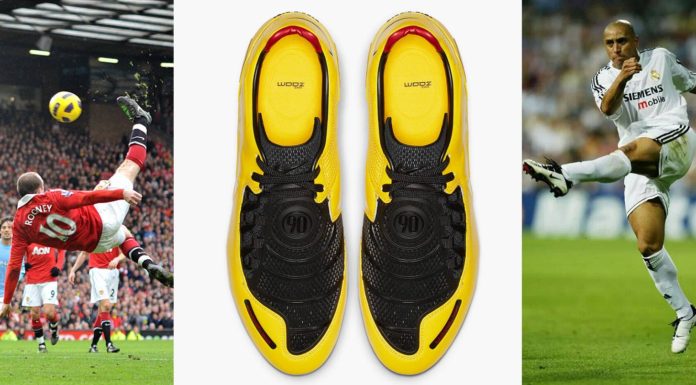Like the Premier League was once a haven for USMNT players in the early 2000s, Serie A has become the best fit for top Americans among Europe’s elite leagues today.
Watching Christian Pulisic’s evolution at AC Milan has been a dream for American soccer fans. The 26-year-old winger had a tough time at Chelsea, a club that gave the American star few chances. Sure, he dealt with several injuries, but even when healthy his playing opportunities were sporadic at best. However, Chelsea’s loss was Milan’s gain.
Just over one-quarter through his second season at the club, and no one can question that Pulisic has been one of the best signings in recent Serie A history, and the best signing at AC Milan in a while. Numbers don’t lie — Pulisic has 22 goals and 13 assists in 62 games for the Rossoneri.
Adding to that, the American has turned into an attacking brain for the club. While playing on both wings, first-year Milan manager Paulo Fonseca believes Pulisic best serves his club by playing down the middle. No matter where he plays, however, he remains productive. Pulisic has provided at least one assist in each of his three roles at the club.
While in Serie A, Pulisic is improving in another aspect of his game: tracking back and helping in defense. Under previous manager Stefano Pioli, Pulisic had already been praised for his work rate, which has been evident in his defensive contributions since his arrival at AC Milan.
This rounding out of Pulisic is evidence of the tactical nature of Serie A, known for its defensive style, often called “catenaccio,” which focuses on organization and discipline. While traditionally defensive, the league has seen a shift toward more attacking play, showcasing skillful players and creative tactics. Pulisic and many other Americans fit right in.
Americans in Serie A

Prior to the current generation of players, the history of Americans in Serie A can best be described through two names: Alexi Lalas and Michael Bradley. Two very different but successful stories of U.S. men’s national team players in one of Europe’s top leagues.
While American-born footballers Alfonso Negro and Armando Frigo played in Serie A throughout the 1930s and ’40s, neither represented the United States on an international level. Negro actually represented the Italian national team at the 1936 Olympics, giving him the distinction of being the first American-born player in both Serie A and the Azzuri.
Technically, Lalas is the first USMNT player to feature in Serie A. In 1994, he signed with Padova. His rock star, grunge image was counter to the suave, suit-wearing Italian soccer players of the time. He won fame at the 1994 World Cup for his unique look and strong defensive play, making him a standout in the world’s top league at the time.
Despite initial skepticism that he was merely a “marketing signing,” Lalas held his own and did a formidable job in Serie A, so much so that he was invited on various soccer shows and praised in the press.
When Lalas was arguably playing the best soccer of his career, he left to join Major League Soccer and play for the New England Revolution to help kick-start the league. It was a decision that helped MLS but hurt Lalas’ level of play, which never returned to the heights of his European days.
It took 15 years for another American to play in Italy’s top flight, when Bradley landed at Chievo Verona in 2011. Before that, no American had the credentials to play in Serie A, as the league was known for its defense and solid soccer IQ — something many Americans had struggled with, despite playing either goalkeeping or workhorse roles in other leagues in England and Germany.
When Bradley arrived, he was much more polished than Lalas, having played in the Eredivisie and the Bundesliga. It did not take long for fans and pundits to recognize Bradley’s tactical awareness and intelligence. He lasted one season at Chievo Verona before moving to Roma.
At Roma, Bradley played well alongside the likes of Francesco Totti, but a mega offer from Toronto FC prompted him to leave Rome after just two seasons. Similar to Lalas, he may have departed during the peak of his career.
Enter Weston McKennie
The next American of note to pave the way for USMNT players in Serie A was Weston McKennie. The box-to-box midfielder has proven his worth at Juventus time and again, despite constant rumors of being transferred to another club or not being part of Juve’s future plans. The 26-year-old continues to demonstrate that he is one of the best players on the squad.
This season alone, after missing much of preseason and working his way back into good graces, McKennie has two goals and two assists in nine games across all competitions, with a lifetime total of 15 goals and 17 assists in 143 matches for The Old Lady.
McKennie recently delivered a major performance with two assists in a 4-4 draw against Inter Milan, and scored his first goal of the Serie A season against Parma in the very next match. Although he sometimes faces criticism for his laid back demeanor and nonchalant style, McKennie is a force in midfield for Juventus and has developed excellent chemistry with striker Dušan Vlahović. His play in Serie A paved the way for the arrival of Pulisic at Milan and his Juventus teammate Tim Weah.
The New Batch of Americans in Serie A
Today, more Americans are playing in Europe than ever before, and perhaps more importantly, more young Americans under 23 are signing deals with major European clubs.
The notion that Americans can’t play soccer is outdated, and the evidence lies in the player profiles in Italy.
Weah joined Juventus after a steady career that saw him play for PSG and Celtic before showcasing his talents consistently at Lille. Since Weah’s move to Turin, the winger has returned to his more familiar attacking roles. Recently, he has responded with three goals and one assist in six league matches, and is on track to have the best season of his career.
Gianluca Busio is another great example of an American making a name for himself in Italy. A bit different from Pulisic and Weah, Busio made his mark in MLS with Sporting Kansas City before moving to Venezia in Serie B.
Venezia has fluctuated between Serie A and B throughout Busio’s four seasons with the club (they are currently in the top flight), but the 22-year-old midfielder has honed his skills and become a much better player along the way. Busio is an intelligent, ball-controlling playmaker with the potential to score goals.
Busio’s pathway to Serie A could serve as a model for many young talents coming out of MLS: Go to a club in Serie B, win promotion, learn the craft of the tactical approach to Italian soccer, and make a name for yourself. Busio is reported to have interest from many established Serie A clubs, and the seven professional seasons under his belt in addition to national team experience at his young age makes him a valuable commodity.
Yunus Musah represents another experience frequented by top American players. While he hasn’t quite yet broken into the Milan starting 11, his minutes as a substitute have been consistent, and he’s shown some of his potential despite stagnating in other areas. Musah has demonstrated that he has the quality to play for Milan, and will look for his opportunity to break out.
While some players have faced their trials and tribulations, Serie A and its growing American audience now have something to tune into every weekend: A crop of very talented American players competing for some of the top clubs in the Italian league.
Reports indicate that Italian clubs are increasingly looking toward the United States. With the successes of players like Weah, Pulisic, Busio, and McKennie, along with past representatives like Tanner Tessmann — who signed with Lyon this summer after a successful stint at Venezia — Serie A has become a haven for some of America’s top players.








